The Russian cities you're not allowed to visit

Thousands of travelling football fans have been discovering the joys of Samara, Kaliningrad and Nizhny Novgorod in recent weeks. All three have different things to recommend them. Kaliningrad, formerly Königsberg and part of a Russian exclave that’s closer to Amsterdam than Moscow, is a salty Baltic city with connections to Immanuel Kant and a fascinating, sandy, Unesco-listed peninsula, the Curonian Spit, on its doorstep. Samara, on the banks of the Volga, boasts riverside parks and an impressive art museum. Nizhny Novgorod - hats off if you can find it on a map - has its own hilltop kremlin and a clutch of imposing churches. All three have one thing in common, however. Thirty years ago, you wouldn’t have been allowed in.
During the Soviet era, dozens of towns and cities - normally those that contained military bases or secret research facilities - were completely closed to foreign visitors.
Kaliningrad, for example, as the country’s most westerly major port, was of huge strategic importance and home to the Soviet Baltic Fleet. As many as 600,000 soldiers, sailors and their families were based there at the height of the Cold War, accounting for around half of the city’s total population.

Wrecked by the RAF during the Second World War, handed to the Russians after Potsdam and then hidden for almost 50 years, Kaliningrad - renamed in honour of one of Stalin’s particularly nasty henchmen - finally reopened in 1991. The first tourists to return, including many former German residents, found nearly every remnant of old Königsberg obliterated.
An LA Times report from 1991 said: “Some of the damaged old buildings had stood until 1968, people said, when Nikita S. Khrushchev decided that old Konigsberg, the cradle of East Prussian militarism, should finally disappear. Houses that could have been repaired were torn down and their bricks loaded onto barges to serve as construction material in Vilnius, Riga and Leningrad [now St Petersburg].
59 amazing facts about Russia
“What went up in their stead was a nightmare landscape of post-Stalinist architecture, grim ranks of colourless concrete apartment buildings, among which stand the few remaining old homes, with their pointed Hanseatic roofs and rococo trim tower.”
There have been improvements since then, however. Adrian Bridge, writing for Telegraph Travel, said: “Visitors can now enjoy glimpses of that rich German legacy. The city boasts its own Brandenburg Gate (albeit much smaller than the one in Berlin); and the city’s cathedral – thanks primarily to funds from Germany – has been rebuilt. Within the cathedral, the Kant Museum provides a fascinating insight into the life and times of the great philosopher. Nearby, the ‘Fishing Village’ with its red-roofed buildings and colourful façades along the river Pregolya has something of the look and feel of the old Königsberg. You can even enter the bunker to which the German generals retreated as the Soviet forces closed in.”
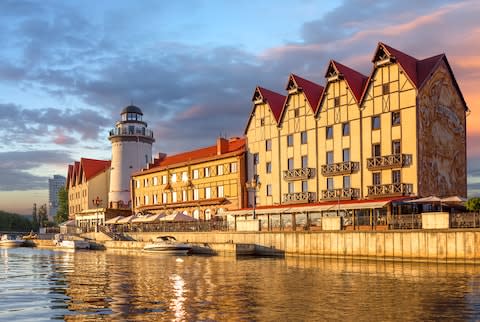
Samara, renamed Kuybyshev in 1935 after a Bolshevik leader before being handed back its historic name in 1991, was closed to foreigners because of its role in the Space Race. Its factories built the rocket that sent Yuri Gagarin into orbit in 1961 and it is no coincidence that the city’s swanky new football stadium - built for this year’s World Cup - is called the Cosmos Arena and resembles a flying saucer. The city’s top football team will inherit the ground after the tournament. Its name? Kriylya Sovetov or “Wings of the Soviets”.
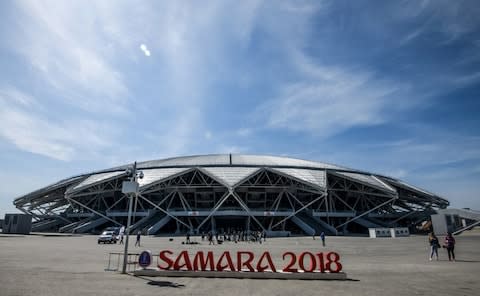
The city, where England defeated Sweden last week, is still home to Russia’s aerospace and aviation industries - but the veil of secrecy has now been lifted. Indeed, since 2007 visitors have been able to visit Cosmic Samara, a museum dedicated to the city’s lofty achievements.

Nizhny Novgorod, meanwhile, renamed Gorky from 1932 until 1990 after its most famous son, the writer Maxim Gorky, was an important industrial centre, dubbed the “Russian Detroit”. It was the largest provider of equipment to the Eastern Front during the Second World War, and continued to serve as a centre for military research after the conflict, making the Soviet Union’s decision to close it to foreigners during the Cold War entirely unsurprising. In fact, despite its vast size (it is Russia’s fifth biggest city by population), street maps were not available for public purchase until the 1970s.

For seven years, Andrei Sakharov, who designed the Soviet hydrogen bomb, was held under house arrest in the city. His tiny apartment is now a museum.
“Museum literature and a tour guide explain how Sakharov was stunned by the might of a Soviet H-bomb test in 1955,” wrote Stephen Wade, an Associated Press reporter, last month. “He became the Soviet Union's most important scientist, and at the same time the shock of his own thermonuclear creation led him to work for causes connected to world peace and human rights. The most compelling artifact is a white, rotary-dial telephone that was installed for just one call — so Soviet leader Mikhail Gorbachev could phone and tell Sakharov his exile had ended and he was free to move back to Moscow, where he died in 1989. There's also Sakharov's writing table with one leg held in place with what appears to be twisted string — said to be Sakharov's own repair job.”
The three cities hark back to a lost world of Cold War secrecy. Well... not entirely lost. Remarkably, Russia still has as many as 60 closed settlements, firmly shut - unless special permission is granted - to outsiders (and now known, slightly unromantically, as "closed administrative territorial formations”).
Many are publicly acknowledged. They include Vilyuchinsk, a base for nuclear submarine construction; Dikson, Russia’s northernmost port and one of the most isolated settlements on the planet; Zheleznogorsk, a centre for the production of plutonium nicknamed “Atom Town”; Fokino, home to the Russian Pacific Fleet; Tsiolkovsky, which serves the nearby Vostochny Cosmodrome; Severomorsk, home to the Russian Northern Fleet; and Snezhinsk and Sarov, Russia’s main centres for nuclear research (a model of Tsar Bomba, the most powerful nuclear weapon ever created, is found in Sarov’s atomic bomb museum).

These top secret towns once had top secret names. Until Boris Yeltsin decreed in 1992 that such places could use their historical moninkers, they were given coded ones. Zheleznogorsk, for example was known as Krasnoyarsk-26. Krasnoyarsk being a nearby settlement and 26 a designated post-office box number. Snezhinsk was called Chelyabinsk-70.
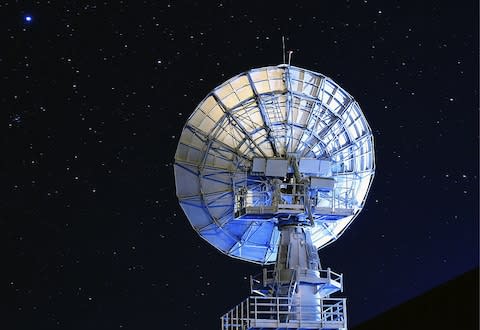
Among the most notorious closed towns is Ozyorsk, a centre for the processing of nuclear waste, previously known as Chelyabinsk-65 and City 40. It remains one of the most contaminated places on the planet more than 60 years after the 1957 Kyshtym nuclear disaster in which a tank of liquid waste exploded, releasing more radioactive contamination than Chernobyl. Despite the severity of the disaster, it was covered up until 1980.
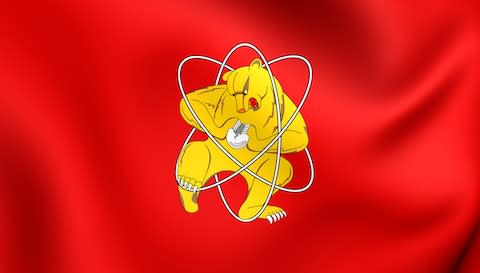
“Deep in the vast forests of Russia’s Ural mountains lies the forbidden city of Ozersk,” wrote Samira Goetschel, director of City 40, a documentary about Ozyorsk, for The Guardian in 2016. “Behind guarded gates and barbed wire fences stands a beautiful enigma – a hypnotic place that seems to exist in a different dimension.
“On a typical day, young mothers push newborns in prams and children play in the street. Music booms from teenage boys’ stereos as they show off their skateboarding skills to young girls. In the nearby forest, families swim in the lake as older folk rest on park benches, enjoying a lazy afternoon watching passersby.
“On the side roads, local women sell fruit and vegetables. Only the Geiger counters used to check the produce before it is purchased point to the dark secret that haunts this tranquil urban scene.
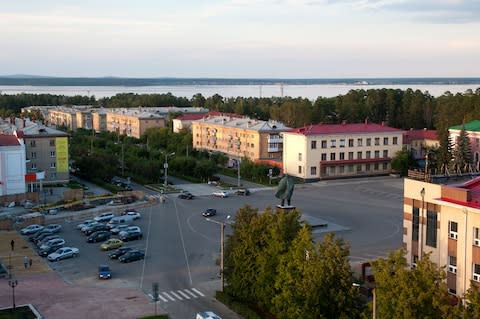
“The city’s residents know the truth, however: that their water is contaminated, their mushrooms and berries are poisoned, and their children may be sick.”
“Yet the majority do not want to leave. They believe they are Russia’s ‘chosen ones’, and even take pride in being citizens of a closed city. This is where they were born, got married, and raised their families. It is where they buried their parents, and some of their sons and daughters too.”
The residents of closed cities can come and go, but other Russians - even family members - need a special permit to enter. Only those born there, or with a job in the town, have the right to stay. Citizens are forbidden from sharing information about their towns and during the Cold War, they were not marked on maps, nor did those who lived there appear on census records. But in return for keeping their secret, residents were rewarded. Better apartments, proper healthcare, and luxury goods like bananas and caviar - which goes some way to explaining the curious attitudes of the people of Ozersk. There was - and for some, still is - prestige in living there.
Zvyozdny gorodok, home to the military research and space training facility known - in English - as Star City, is also officially a closed settlement, but Star City is opened to tourists with special permission. Telegraph Travel’s Caroline Shearing went in 2015. She wrote: “My first glimpse of Star City, or ‘Closed Military Townlet Number 1’ as it was more prosaically known in the early days, came via a gap in the densely forested pine trees that surround it: a concrete perimeter fence topped with rusty barbed wire. The Soviet people knew of the city’s existence but the majority did not know its whereabouts as its location did not appear on any maps.
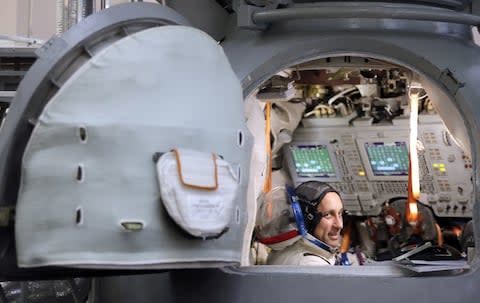
“We were met by a Star City guide before negotiating a succession of manned security gates, at each of which I experienced a nervous wait while my paperwork was scrutinised. Finally we arrived at the Yuri Gagarin Training Centre. The facility, made up of a group of Sixties Soviet-era blocks in varying shapes and sizes, including one topped by a moon-like dome, is where Yuri Gagarin got into a spin in the world’s largest centrifuge and where Valentina Tereshkova, the first woman in space, lives to this day in an area that remains off-limits to visitors. Russian cosmonauts past and present live in Star City with their families, including Yuri Gagarin’s widow, and facilities include a school, shops and a cinema.”
Inside the bizarre world of Soviet sanatoriums
With few examples, Star City being one of the most notable, tourists are hardly missing out. Who wants to visit a naval base near Murmansk when St Petersburg is rather easier to reach? But these closed towns remains a curious relic of the Cold War – and an almost exclusively Russian phenomenon. In an increasingly open world, where information has never been more accessible, secrets still linger in the world’s biggest country.

